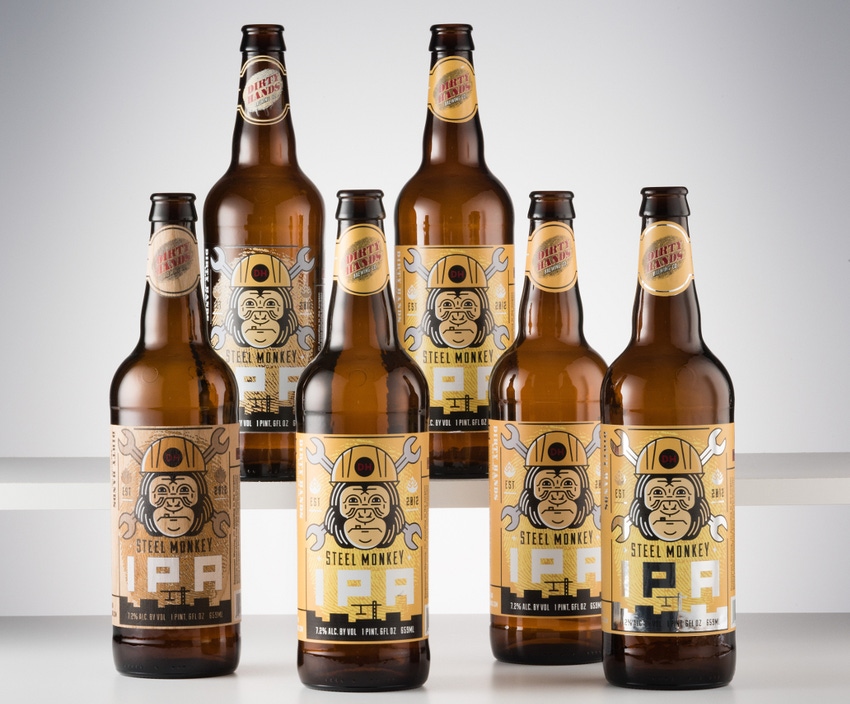
Packaging design is an important differentiator in the competitive craft beer category, with certain labeling materials catching buyers’ attention faster and driving purchase decisions, according to a recent study.
Researchers from Package InSight, a Clemson University start-up, conducted the two-day beverage packaging study sponsored by Avery Dennison in a simulated retail environment at Clemson’s CUshop Consumer Experience Laboratory. The “store” included 12-foot long aisles with sections for produce, refrigerated products and frozen food, in addition to beer.
The study included 193 participants, male and female, ranging from younger than 21 to older than 65; 55% were 21 to 39 years old. More than 180 of the participants had made a retail purchase of craft beer within the preceding three months.
For the study, Avery Dennison created a beer brand called Steel Monkey IPA. The Steel Monkey graphics were then replicated using each of six pressure-sensitive label materials: paper, metallic, wood veneer, white gloss film, matte film and clear printed film.
Participants wore eye-tracking glasses that recorded their eye movements as they viewed shelves stocked with the Steel Monkey bottles in combination with nine other brands of craft beer. All the brands were in 22-oz. bottles.
The glasses enabled the researchers to time how long it took for a participant to fixate on a label after it entered their field of vision. On this “time to first fixation” metric, white gloss film and wood veneer were the best performers. Metallized film was close behind them.
A second metric, “total fixation duration,” quantified the amount of time participants fixated visually on the labels. This measurement showed that participants looked at the clear-on-clear label more than 20% longer than they looked at the labels made of other materials. Significantly, a participant’s fixation duration with a product correlated with his or her likelihood of buying that product.
Yet another measurement, “fixation count,” identified how many times a participant visually scanned a product. The higher the fixation count, the greater the chance of purchase. On this metric, glossy film and clear film labels led the pack.
In additional findings, 62% of participants reported that the Steel Monkey metallic label caught their attention versus 38% for the paper, matte film, glossy film, wood veneer and clear film labels combined.
And 46% perceived the Steel Monkey IPA with the metallized film label as being the most expensive of the test products. At the other end of the spectrum, 40% perceived the paper-labeled Steel Monkey as being the least expensive.
A white paper and infographic summarizing the study’s results are available from Avery Dennison.
About the Author(s)
You May Also Like




